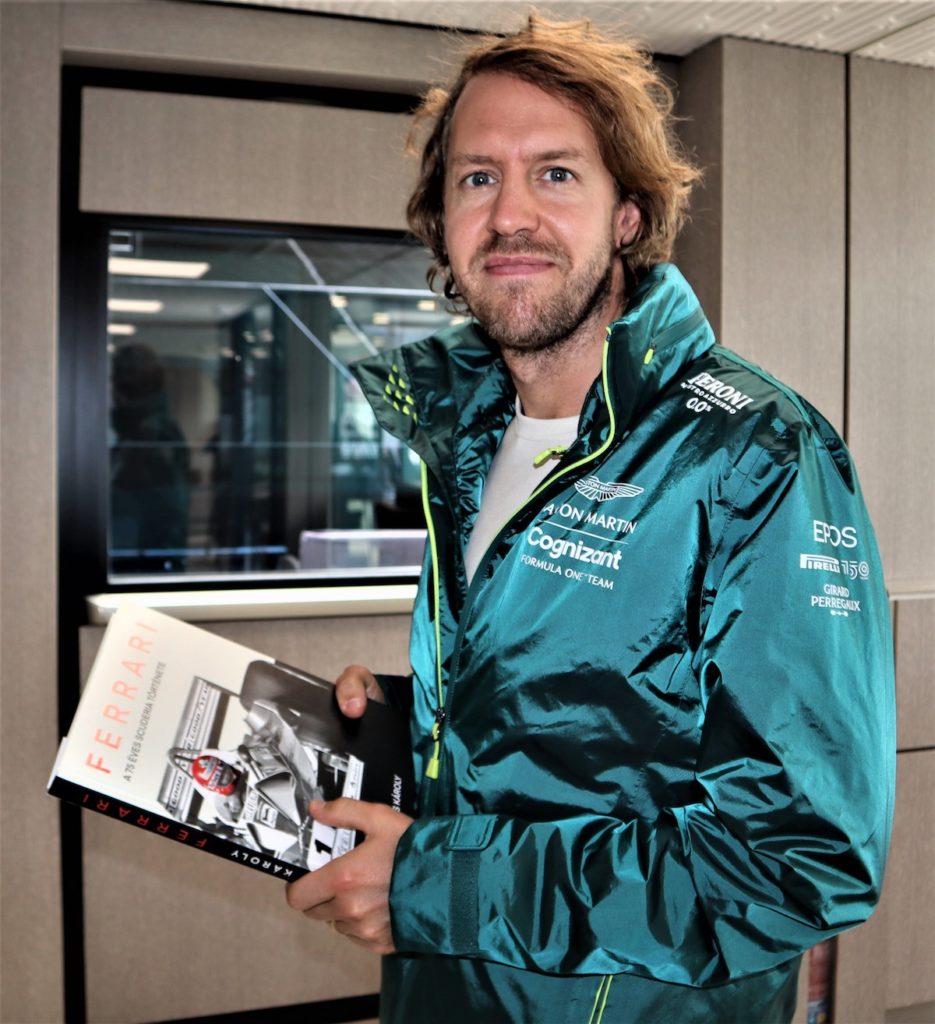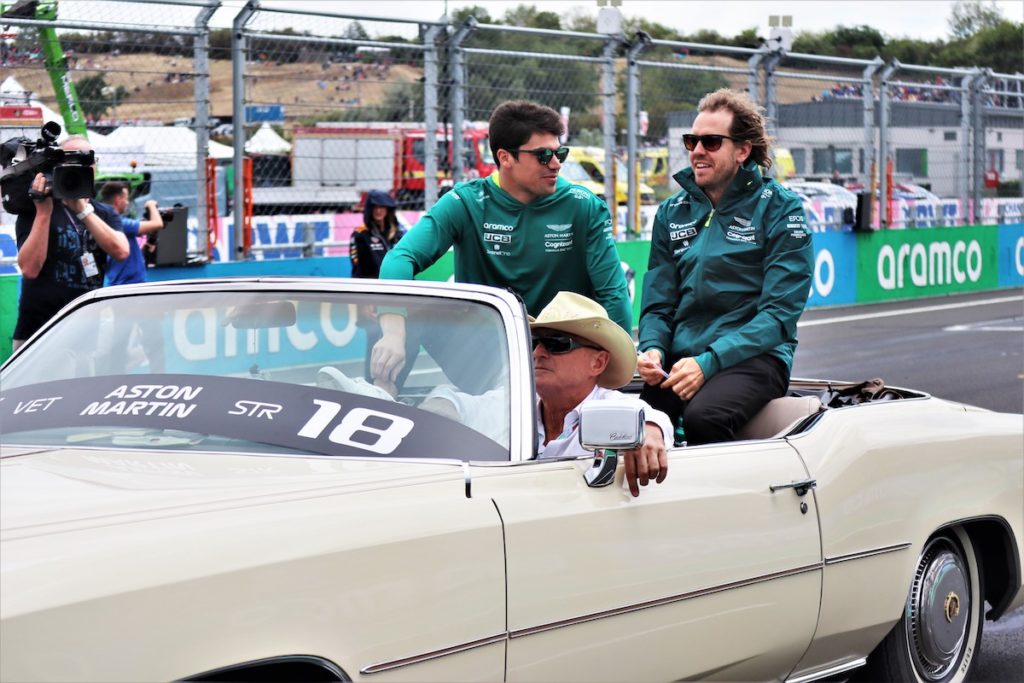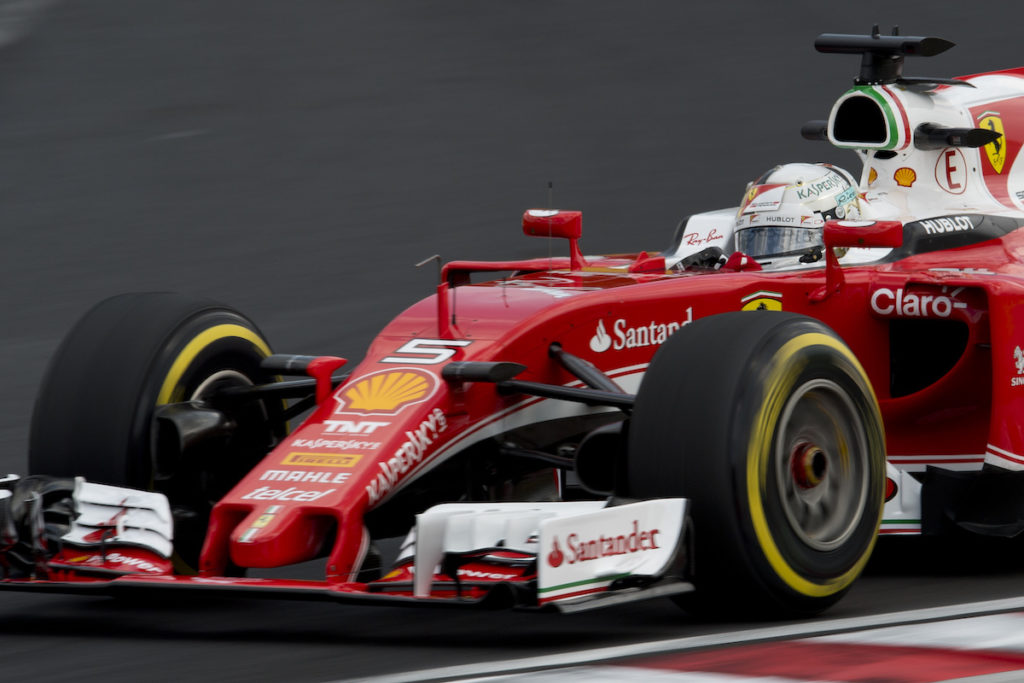
Károly Méhes looks back on the legendary career of the 4-time World Champion, Sebastian Vettel, who retired at the end of the 2022 F1 season.
Images © Károly Méhes
BMW Sauber Debut
The first time I saw Sebastian Vettel was in February 2007 when I was invited to the BMW-Sauber launch event in Valencia. As we waited for the beginning of the show (the likes of which we don’t see nowadays), I was chatting with Robert Kubica when I caught sight of a boy who wore a Sauber racing suit as well but looked like he should be in high school. It was the 19 year old Sebastian Vettel, full of smiles and abundant hair.
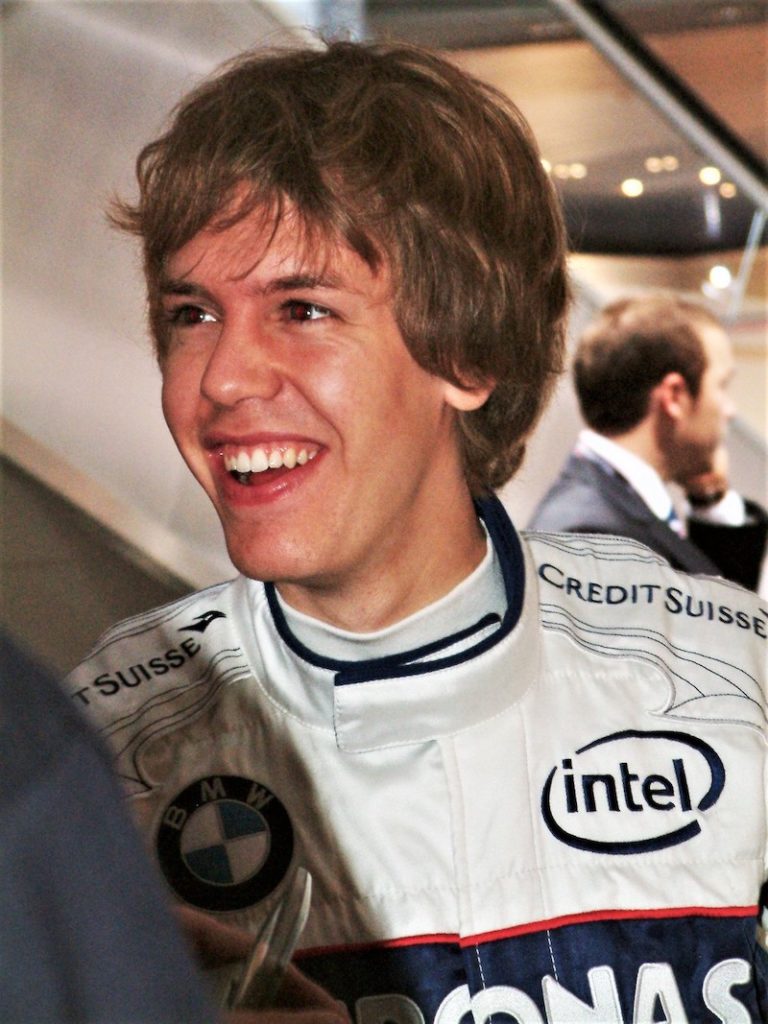

Making a Name with Toro Rosso
Later that year, Vettel substituted for Kubica after his horrendous shunt in Canada and the young German was immediately up to his task, scoring a point for eighth place in his very first race. A few races later, in Hungary, I attended Toro Rosso’s press conference, where Vettel had taken the place of Scott Speed and became a regular F1 driver with the Italian squad.
Vettel remained with the Faenza-based team for 2008 and in Monza he produced one of the most astonishing results of his young career, qualifying the Toro Rosso (ex-Minardi) on pole and scoring a lights to flag victory in front of the tifosi! He had done more than enough to earn his promotion to the “big team,” Red Bull.
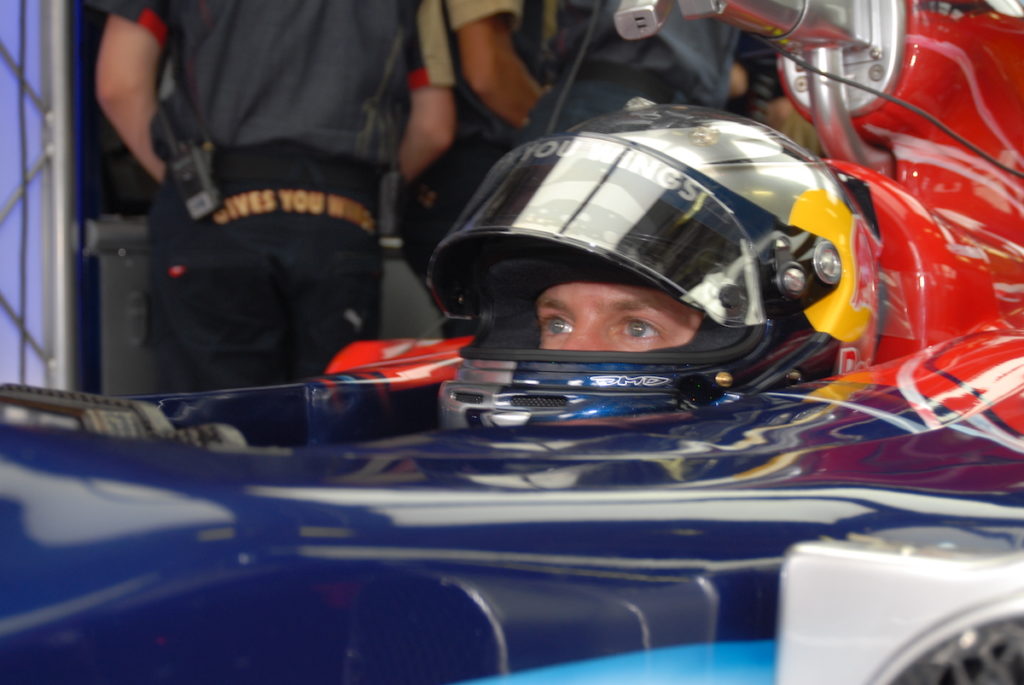
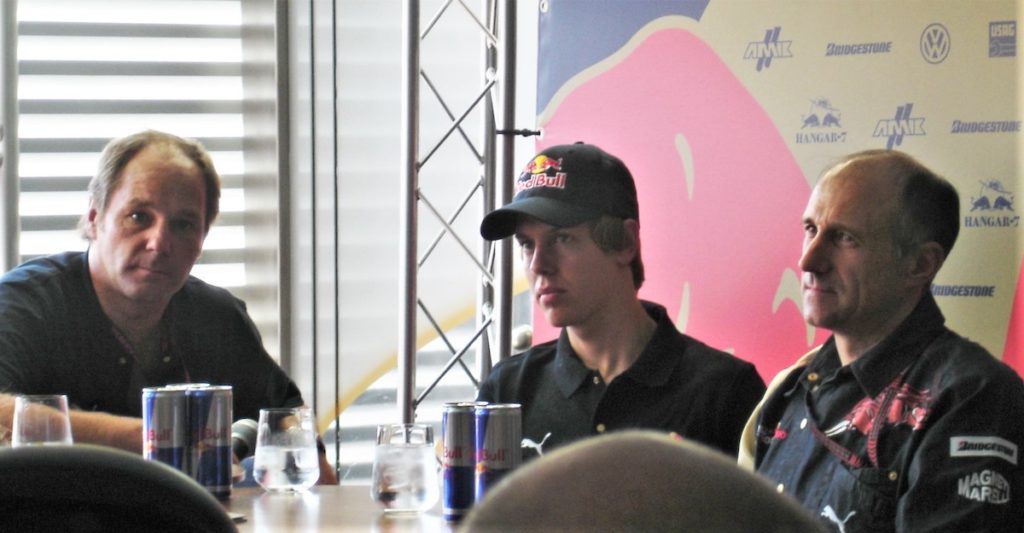
Achieving Legendary Status with Red Bull Racing
From 2009, he was Red Bull’s number 1 driver, with Mark Webber as his teammate. The pair had an often-tense relationship but there was no question about Vettel’s supremacy, nor who Dr. Marko and Christian Horner’s favourite was. The young Seb at that time, I must admit, was not always my favourite. He was a smart guy out of the car, but I thought his racing style was too aggressive and he was not always fair on the track. There was no question about his abilities, however, and as the next four seasons progressed it was not hard to be convinced that a true legend was being born in front of our eyes.
Four successive World Championships followed. In 2010 and 2012, he had to fight hard against the Ferrari of Alonso, but in 2011 and 2013, Vettel displayed a total demonstration of speed and racing charisma. Vettel’s raised index finger became the defining symbol of his victories in this era.
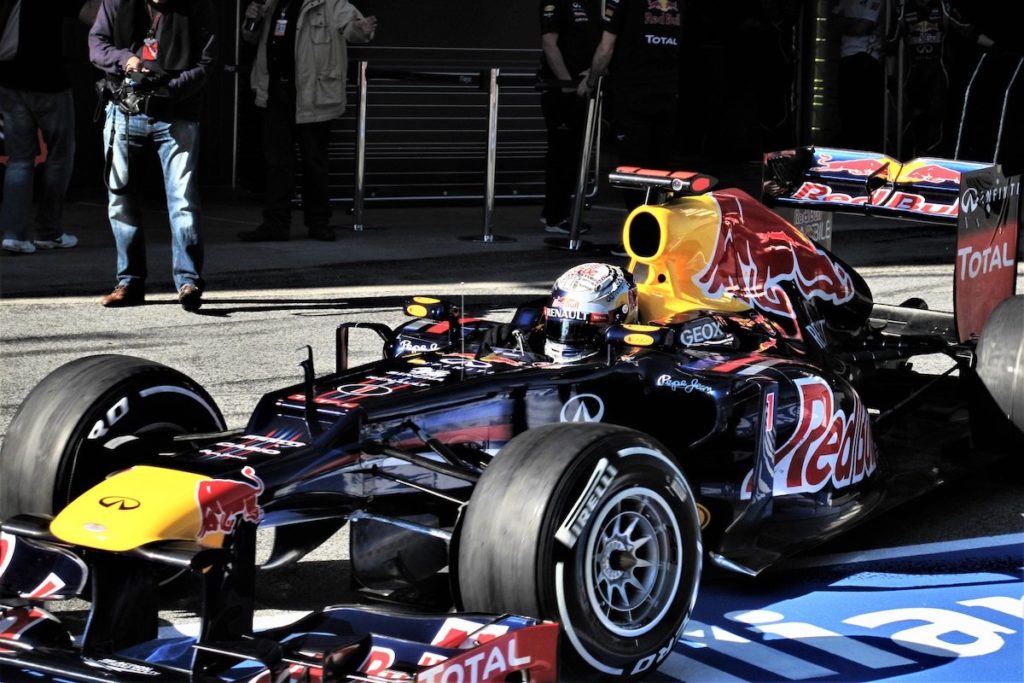
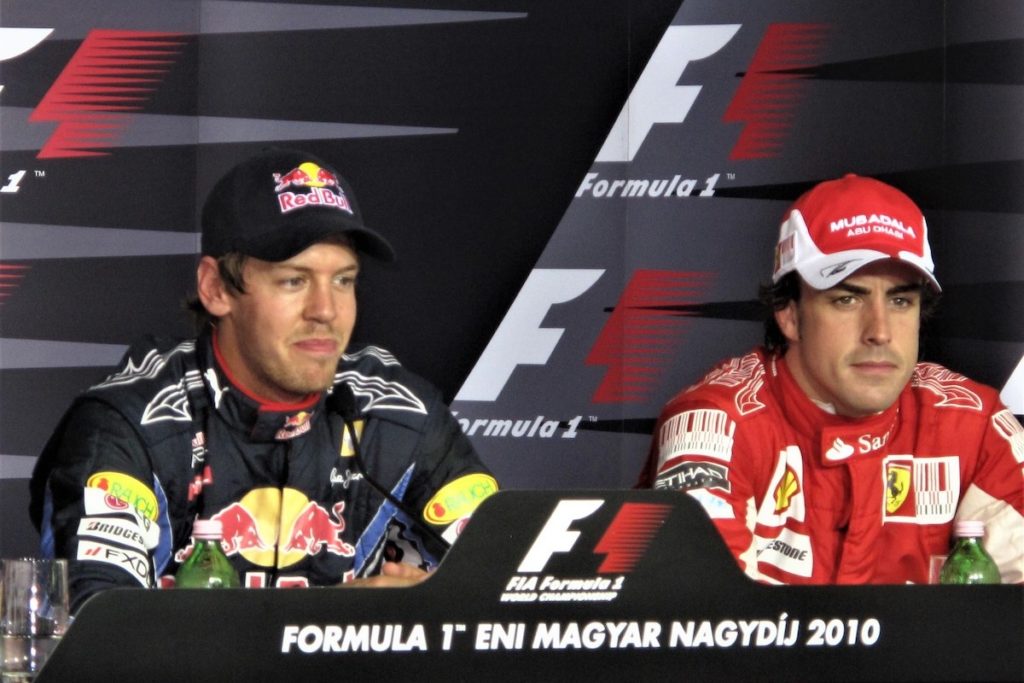
I attended a Red Bull ceremony in Hangar 7 at Salzburg airport after Vettel clinched his first title in 2010. The hangar was packed with media from Austria and also around the world, and this time I once again saw a shy boy who was almost embarrassed about the hype he had created with his success.
At this point I must mention Vettel’s personal press officer, Britta Roeske, with whom I developed a good working relationship. This helped, of course, in reaching Sebastian as he became more popular. They seem to share the same character; if Britta or Seb offered you their time, you’d know that they would be fully committed.
In 2015, when Seb was already a Ferrari driver, I gave Britta a copy of my Gilles Villeneuve book at the Red Bull Ring. The next day, she told me she had already read the whole book and asked if she could also get a copy for Seb, as he is also interested in Ferrari’s history. Of course, I was happy to hand over another copy! In return, Britta took a picture of me and Seb together in the Paddock. Not the usual behaviour of a driver and his press officer…
I also enjoyed attending many PR events with Seb. Simply because he was always so natural in these situations. He even seemed like he was enjoying himself in the later years of his career. Another time, in Austria once again, he was asked to point out the birthplaces of the great Austrian drivers – Rindt, Lauda, Berger, Marko – on a map. He laughed at his own mistakes and made everyone else around him laugh too.
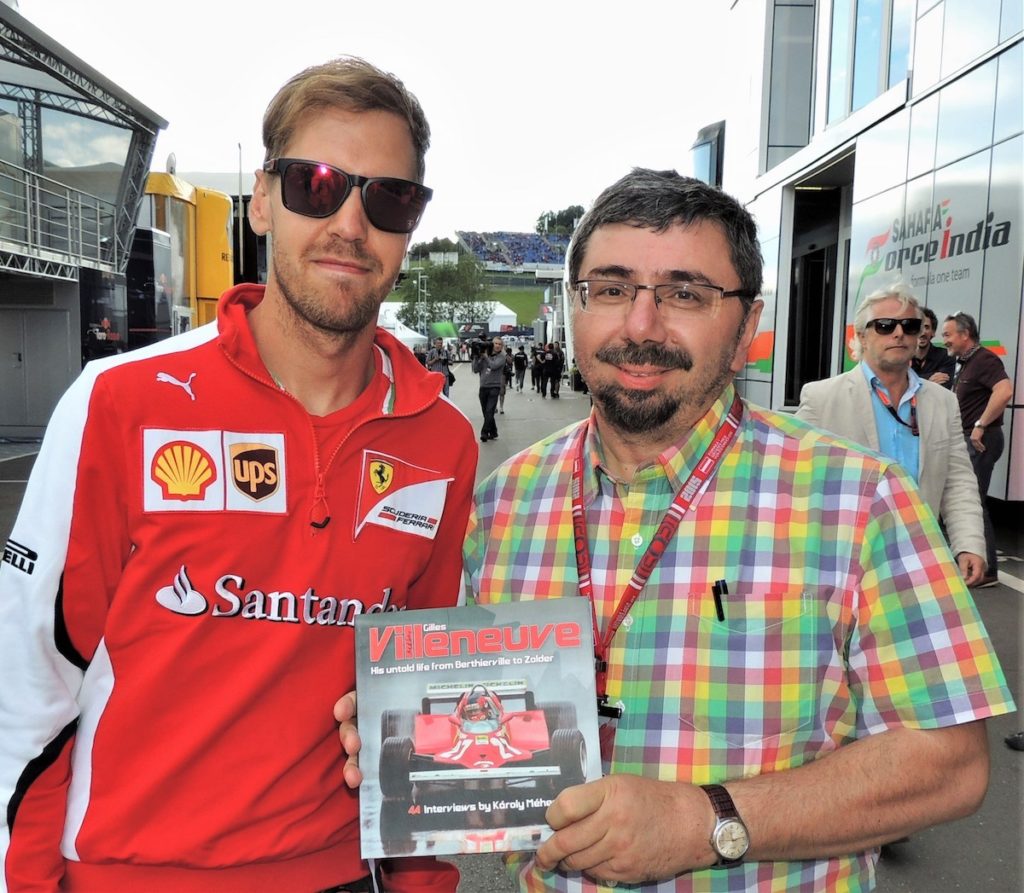
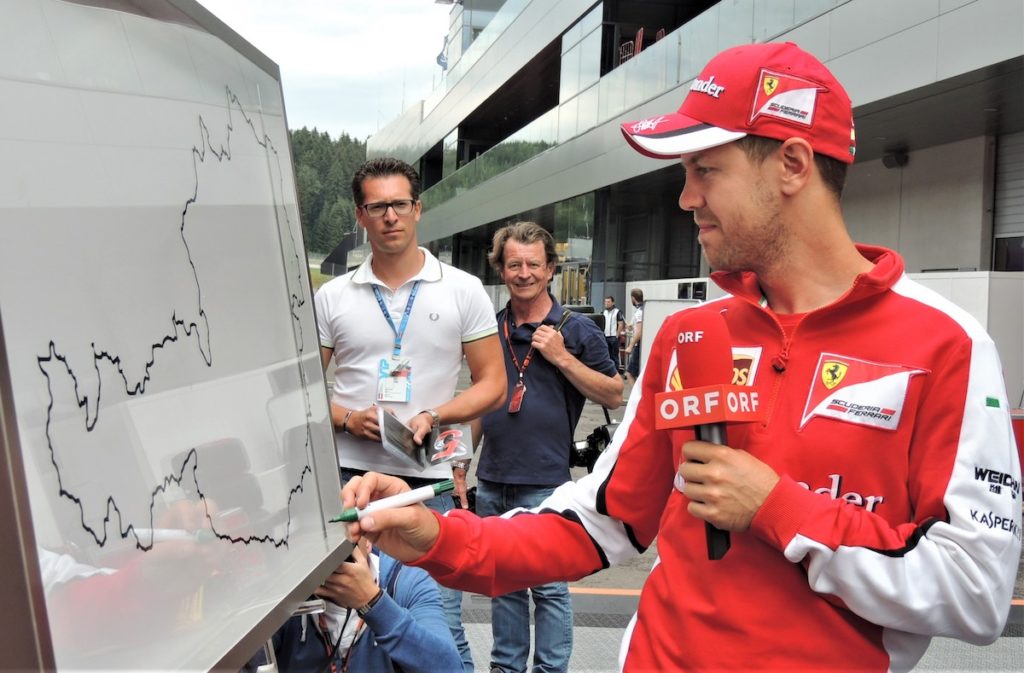
The Ferrari Years
Thinking of Vettel’s Ferrari years, all I can say is that it was a shame he had to leave after six years without a title. He was very enthusiastic at the beginning, driving some brilliant races and achieving some memorable wins. But after his mistake at the 2018 German Grand Prix, when he crashed out while leading, he somehow became a different driver. Something was lost, and it wasn’t only his much-awaited Ferrari title.
Perhaps it was not a coincidence that since then, Vettel’s support for different causes outside of F1 became more evident. Fighting against the injustices of the world – poverty, racism, climate change or the war in Ukraine – became just as important to him as the sport of Formula 1. As Vettel began to explore new paths outside of F1 in recent years, even his style of dress changed, to that of a Greenpeace activist or some kind of Hindu guru.
Seb always cared about the underprivileged and was ready to help. Whenever I asked Britta if Seb would support a charitable cause or provide some signed caps or cards, she never refused. He made some of his disabled fans from Hungary very happy.
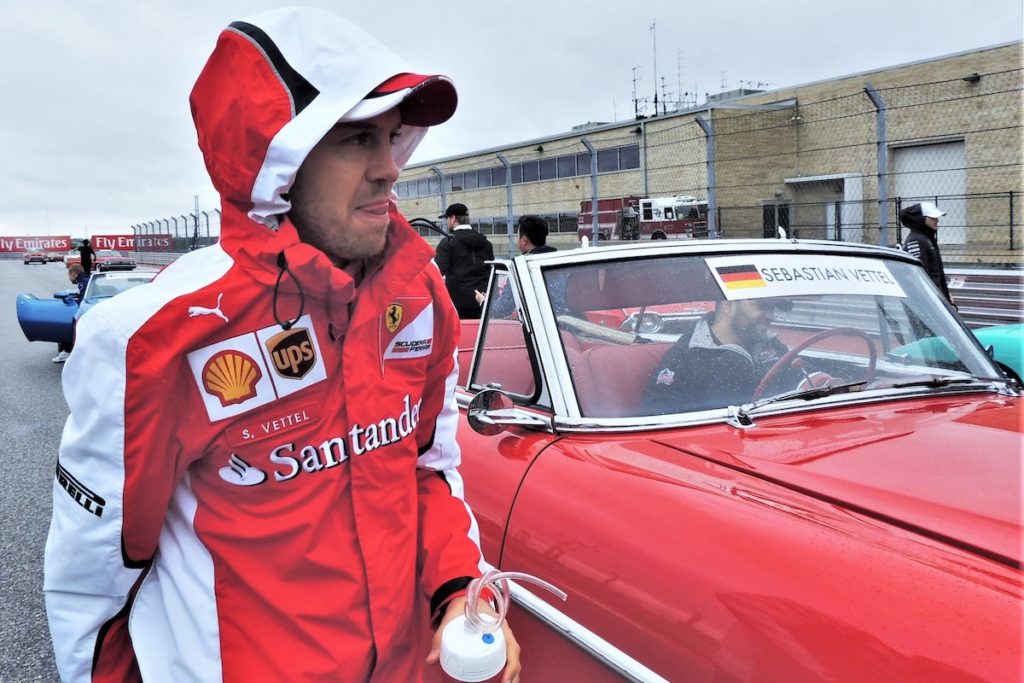
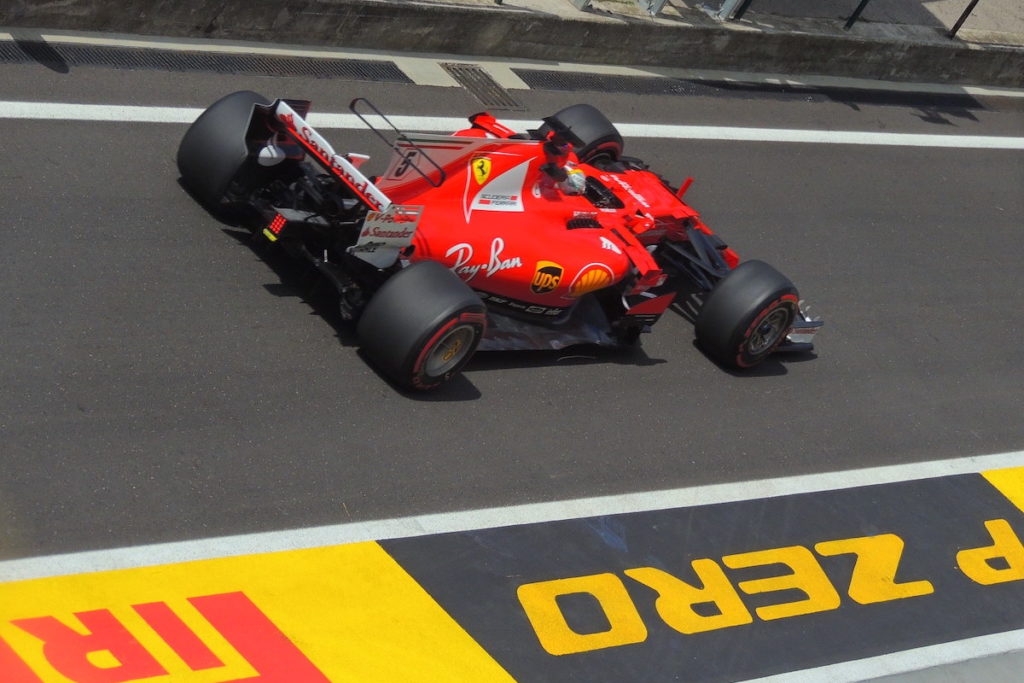
Aston Martin Swansong
I met Vettel for the last time in the Aston Martin motorhome at the Hungaroring this year. I gifted him my latest Ferrari book. He took it graciously and was surprised to see a chapter about his time in Maranello. He was really happy with it and ask me to sign the page where his chapter began.
Fast forward to Abu Dhabi and the final race of the season. Seb’s swansong. I don’t remember any driver having had such a farewell as Vettel received, not only from his fans but also from his former teams AlphaTauri, Red Bull and Ferrari, as well as all the drivers and the whole F1 family. It was a sign that Seb was not only respected for his achievements but truly loved by everybody. He will be missed.
